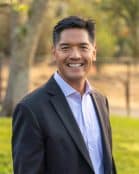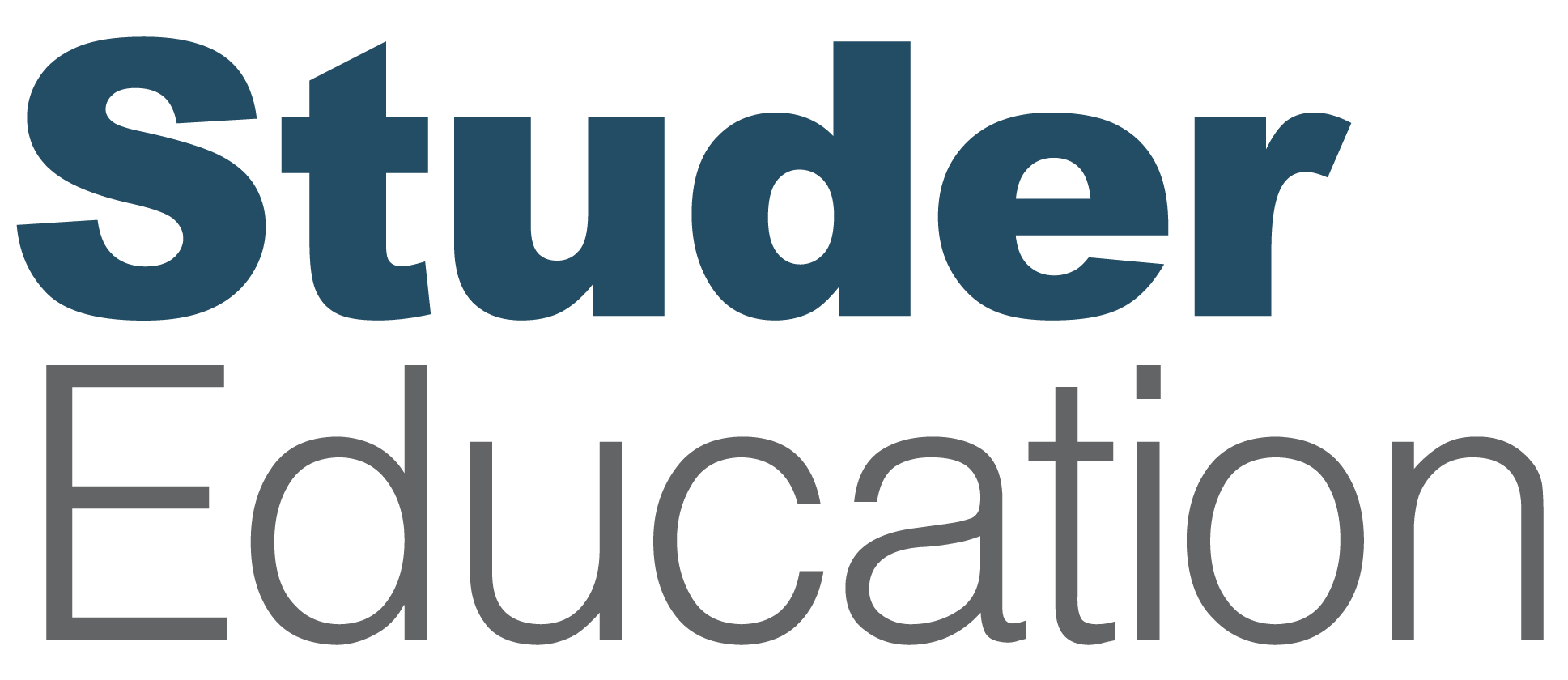
Whether you’re building a winning team or a successful organization, consistent effort and a structured approach will get you to the finish line. At El Dorado County Office of Education, short cycles of improvement are a core part of their winning strategy. Tune in as Dr. Janet Pilcher sits down with Dr. Ed Manansala, Superintendent of Schools, to hear how he leads short cycles of improvement to drive real change. He’ll also share specific examples of how these cycles are applied to improve processes in multiple departments, from transportation to IT. Listen now as Dr. Manansala highlights how this focus on improvement fuels his team’s success, and learn how you can apply it with your own teams.
This episode addresses questions such as:
- How do short cycles of improvement provide accountability and focus?
- How do you know when to scale improvements?
- Why is it important to honor the voice of students and staff in the improvement process?
DHP K12 Leadership Conference
Our Destination High Performance (DHP) events honor the transformative leaders shaping the future of education. These events highlight how leaders drive continuous improvement, spark innovation, and elevate education through ongoing leadership development and an unwavering commitment to excellence.
Latest Episodes
Ed Manansala: I’ve watched our team really develop in multiple ways. And one is just the manner in which our team problem solves. There’s a mindset to continuous improvement and there’s a practice to continuous improvement.
[Intro music plays in the background.]
Introduction
Janet Pilcher: Hello, everyone. Welcome to the Accelerate Your Performance podcast, where we gather each week to share stories and strategies from leaders who are hardwiring excellence in education. I’m your host, Dr. Janet Pilcher, founder and president of Studer Education.
Today, I’m happy to welcome back Dr. Ed Manansala. Ed is the Superintendent of Schools for El Dorado County in Northern California, a role he’s held since 2016. He also serves as the current board president of the Boys and Girls Club of El Dorado County. And last year, he was appointed by the Senate to the California Collaborative for Educational Excellence Governing Board.
Building on our series earlier this year about leaders as great coaches of teams, I wanted to bring Ed in to talk about implementing short cycles of improvement. It’s something he and his county office do extremely well. Together, we’ll also unpack the critical role of creating a clear organizational framework that moves teams away from reactive problem solving and towards a culture of proactive and ongoing improvement. So let’s jump right in.
Interview
Janet Pilcher: It’s with great pleasure that I welcome back to our show today, Dr. Ed Manansala. Ed, thank you so much for being with us today.
Ed Manansala: Thank you. It’s great to be with you, Janet.
Janet Pilcher: So I want to dig deep into short cycles of improvement. And you and I have had a conversation in the past about the great work that you do, the leadership that you provide to really dig down into identifying the problem and solving those problems that you have and in building those improvements within your system. So I just, I’m looking forward to you providing our listeners with some specific ways that you do that.
So let’s start, if you would, just as you’re leading those short cycles of improvement, as we talked about, that’s a strength of yours. So, what do the steps look like for you and your team as you begin to move through that process?
Ed Manansala: Sounds good. So first of all, I just want to express how grateful I am for our partnership, your leadership, and then of course the good work that’s taking place. And this area in respect to cycles of improvement really enhances our overall mission and body of work across our county and state. So thank you.
Before we implement short cycles of improvement, in our organization, we needed to tighten up our overall organizational framework. So what I mean by that, we needed to do a refresh on our mission, our vision, and our pillars and values. And that’s what situates these cycles of improvement and ultimately aligns to what we’re trying to achieve.
In one example would be our three pillars, what we stand for is the manner in which we grow and lead together. Second, aim for exceptional service. And third, partner for impact. So that’s the first stage setting, if you will, in the manner in which our cycles of improvement situate.
The second, we wanted to create opportunities to regularly engage at multiple levels. So again, in what I would describe as the oil and fluid behind our cycles of improvement, we situate our one-on-one rounding meetings. We look at team and departmental huddles every other week. And then we look at semi-annual meetings with our leadership.
So as a reminder, we have roughly 600 employees, 25 departments. And so when our leaders come together two times a year, they’re looking at a very disciplined approach in respect to their cycles of improvement. And I wanted to expand on just some examples of what that looks like.
So in June, our leadership team meets, and then in December as well. So an example of the structure that we use in these meetings, we’ll have leaders departmentally provide three highlights, two challenges, and then look at one next action, specifically their 30, 60, 90-day action plans. But that gives you just an initial sense of how we situate this work.
Janet Pilcher: Yeah, thank you for that, Ed. I mean, that structure, what I hear from you is, they know what that structure is, they understand it. It’s part of their DNA. And as your leadership team, they’re able to situate themselves within your, the mission and vision and your goals, your pillars, but really that process for the way that you engage them in those conversations about their priorities and their work.
Ed Manansala: That’s right. And as you know, especially within our field, when you’re providing supports either operationally or programmatically day-to-day, week-to-week, there’s a lot of issues or circumstances that you’re reacting to. So these discipline structures and focus in respect to improvement, provide a real strong accountability and focus in the manner in which we move our work forward.
Janet Pilcher: I love that. And “accountability” then is really not a punitive word. It really is your leaders want to be accountable to whatever it is that they have focused on and it becomes part of what they do. I love, you know, the improvement. I always think about improvement. People talk about accountability and improvement. So we’re really working toward improvement because accountability comes with that, along with that, versus driving from accountability because that’s a whole different mindset.
Ed Manansala: That’s right. I think there’s the individual leader accountability, the manner in which your team embraces accountability to stay disciplined and focused in this work, and then the manner in which we do that as an organization.
Janet Pilcher: Yeah, so good. So let’s dive a little bit deeper. Can you give some examples of how you’ve recently applied this to improve a process and then share a little bit about the results through that improvement?
Ed Manansala: Definitely. Many ways, as a result of the structures that I’ve shared with you departmentally, it’s easy to lift up examples. So let me begin with transportation. So as a reminder, our county office in County is rural in nature. So our transportation department specifically focuses on delivering services for students with disabilities. And for many of our transportation services, it’s even door-to-door.
So one issue that we had in transportation was just the manner in which we documented routes and other systems. And we were moving from a paper-based system to a digital system, and that was significant. And the manner in which we did that, we looked at two programs that actually improved routing, communication with families, and data collection around the quality of our services. So through this cycle of improvement, we were able to move from a paper-based system to a technology system. And the communication with our families has significantly improved, and of course, communication even amongst our team.
So now 70% of our transports are utilizing a program where parents can see where their students are, our main office can see that, and then of course, all of our routes are being tracked and facilitating this operational process.
A second area to look at is within IT, information technology. And it was an issue of communication in a timely and structured way between our human resources department and IT, in the manner in which they were providing technology equipment and even think of emails to new employees. So one would think, it just seems like it would be easy to have on day one, the right technology and the right programs for every new employee. But when you’re looking at an organization as dynamic as ours, we would only have 61% receiving all the appropriate technology on day one.
And what our leaders did in these respective areas just looked at one-on-one meetings to lift up where the challenges were, where the improvements needed to take place, and then ways in identifying what the ideal would look like. So through cross-departmental data collection and communication in the manner that I’m sharing it, we’re at a place now where 100% of our employees on day one have the appropriate equipment, technology, and support services.
Janet Pilcher: Yeah, that’s incredible. And what I like too, what you’re starting with is you’re really looking at what the problem is, where that gap is, and people can identify with this is something we want to improve. So the motivation, and people are motivated usually to build these improvements because they want to do a better job than what that data represented, I’m sure.
Ed Manansala: It is. And again, I think while I could give you a programmatic example, once again, the improvement cycles on the operational side really set the stage for individuals to launch either in our organization where they’re providing professional development to other teachers or educational leaders. Again, on day one, we’re just trying to ensure that they’re ready to be successful. And also, I think individuals who come into an organization, they’re getting a feel of the culture and how tight and strong processes are and ultimately alignment, right, on day one.
Janet Pilcher: Yeah, and that just becomes part of what they do. I mean, part of what they know or the expectations. So how do you, and if you have, just share anything you want here, but how do you know when to scale? So part of it is learning, right? When you’re starting and you’re having conversations, you’re collecting the data. You’re trying things out. Sometimes some things work, some things don’t work. You’re making those adjustments. But at some point, you adapt and then you adapt to adopt. So how do you scale those things and how do you know?
Ed Manansala: I think that the framework that I’m describing, anywhere from rounding to team meetings to leadership meeting every other week, and then of course, the collective leadership as an organization meeting two times a year provides opportunity for us to be able to learn.
So again, as I shared, we have 600 employees in 25 departments. So these 30, 60, 90 day action plans are occurring all across our departments. So it is in these structures where the learning is being lifted. And when our teams are presenting to other departments, you can begin to see where the themes are emerging, where the success is occurring, where the challenges lie.
And all of the body of this work is ultimately lifting up to even our cabinet. And our cabinet again provides that oversight to the entire organization. And it’s in at those points where we begin to say, “here are some promising practices. Here is where we think it’s time to execute.” So it’s a rolling up of the themes of success and challenges in these structures that allow us to know when to scale.
Janet Pilcher: Yeah. So, and part of what you all are, I’m thinking of the leader development opportunities and where leaders are developed. They’re developed in the processes, but really attending, being able to have those in conversations, being able to probe for better understanding, being able to pay attention in ways that help dive deeper into understanding the problem. I mean, those are probably, Ed, things that you all developed, your leaders, those types of skills, I would guess, there.
Ed Manansala: That’s right. And I think our leaders are in these collaborative environments, ultimately developing a mindset in how to approach problems and challenges, rather than, as I was sharing earlier, being in a reactionary mode. The cycles of improvement become, in many ways, a very disciplined approach to a higher level of practice.
And as I was saying before, it’s easy to react versus taking time to slow down, to listen to where the barriers lie. Where are the opportunities to be able to address these various issues?
And I’ll give you one more programmatic example. We provide services to our Native Americans in El Dorado County, and we had a new director come on board, and it was easy to see that many of our families receiving services were receiving fragmented resources, if you will.
And so through a cycle of improvement, a director took time with fresh eyes to really listen to students and families, either from a rounding model to group sessions, and started to identify not only the types of resources they need, the case management type of approach, right down to what additional tutoring and support structures needed to take place.
And I’ve shared before with you, Janet, that we ended up getting to a space where 100% of our Native American students in a county that we serve graduated last year, and that was significant, but again, it was in the context of a cycle of improvement and adjustment.
So again, we see how this process really gets down close to where the challenges lie and lifts up right to a place of student outcomes.
Janet Pilcher: Yeah, so good. And that’s an incredible story and just such a testament to the good work that your team is doing and their dedication to that, Ed. And just their commitment to improvement and commitment to being at their best and working through that process.
So let’s talk a little bit. Let’s, as we close today, let’s focus on leadership, because as I’m sure as you work through the process, your leadership team has matured. You’ve probably seen that maturity along the way. So talk a little bit about how this improvement work has really helped your team mature.
Ed Manansala: Yes, we’ve been at a very intentional approach to improvement over the last five years, and we have been working with you, Janet, and your team, and Pat Greco, over these last five years, and I’ve watched our team really develop in multiple ways. And one is just the manner in which our team problem solves. There’s a mindset to continuous improvement, and there’s a practice to continuous improvement.
I think, you know, we have a leader who oversees facilities in our organization, and his name is Phil, and in the context of a leadership team, he was really emphasizing this idea of we know the importance of not being reactionary, and we need to identify what’s important versus what’s urgent, right? And so we now describe it as the Phil-osophy approach.
But really, it’s situated in this body of work of improvement and being incredibly disciplined. I think our teamwork is becoming much more aligned and coherent, both in mindset but also practice. So we are seeing rounding and just the recognition of good work in a much more structured way. It’s occurring day to day, week to week, month to month, right into our quarterly approach, and it’s the lifting up of good practices and celebrating. So I just gave you the example of, you know, from student outcomes to processes, but our teamwork approach to celebrating good success is something that I’ve watched develop as well.
The last thing I would say is just this idea of voice, right? Really honoring voice has been powerful through this work, and that’s the voice of our students, the voice of those who are serving alongside of our students. That could be instructional aides, teachers, principals, those in what we would consider a traditional district office or our county office. But the lifting up of the manner in which people are articulating their challenges, as well as their suggestions around solutions, has been very powerful in this work.
Janet Pilcher: Yeah, and that’s a testament to your leadership as well, you know, really driving this mindset to practice and continuing to be disciplined in that work. And I think so much, Ed, you know, I use just athletic examples because I was pretty athletic all my life and was a high school coach.
And, you know, it’s just, it is truly that it’s the mindset, but it’s the discipline in the practice. And it’s that the methods that you use in that practice of looking at what’s working, really deeply analyzing that and making those adjustments and continuing to practice at it and get better at it and get better. And just taking those small steps at a time. And the energy that teams or people have to move forward to achieve results just becomes natural.
You know, it’s not the sprinkling of the fairy dust on, you know, the motivation, but the motivation becomes just natural part of what we do. And I know that’s what the team has.
Ed Manansala: Yeah, absolutely. I think just the sports analogy is a great one. And you tend to look at championship teams. When you start to like, open up the curtain, see what the ingredients are, there are typically fundamental practices that are in play. And when we say, you know, “let’s look at what’s working, what are we learning, where are we getting stuck, how do we need help, or where do we need help in these areas?” Right. They, it really is just a, it’s a rhythm and a routine, but to be able to do that in a very structured way, I think has been very beneficial.
Even last week, Janet had an opportunity to read to a group of preschoolers. And, you know, I was just trying to think through what class are they? And they are the class of 2038, right?
Janet Pilcher: Oh my gosh, Ed. [laughs]
Ed Manansala: I think they’re graduating high school. But as I was listening to these students, right, and you look at the teacher and the, even right down to the additional supports around these classrooms, right to the principal, this is a dynamic field. The conditions have shifted great even in these last five years, let alone in terms of what we’re looking ahead. So cycles of improvement really become an important practice in such a dynamic field.
Janet Pilcher: Absolutely. And more important than ever, I think as we continue, you know, to move forward with our future in education. So thank you so much for the work that you do, the work that your team does to contribute to our profession, Ed. Thank you.
Ed Manansala: Thank you.
Conclusion
[Outro music plays in the background.]
Janet Pilcher: Thank you, Ed, for joining us and sharing your invaluable experience. You really hit the mark when you talked about finding that rhythm, that routine, like a well-coordinated team on the field. Thank you for your leadership and for sharing how you coach your team to refine their plays to become better and better.
And to our listeners, time is flying. We’re counting down the days to the Destination High Performance K-12 Leadership Conference, April 15th through 17th. We’ll be packed with mini master classes for an incredible lineup of education leaders. Secure your spot by visiting studereducation.com/events. We’re getting so close, and I can’t wait to see you there.
As always, thank you for tuning in to this episode of the Accelerate Your Performance Podcast. I look forward to seeing you next week as we continue to work together to achieve organizational excellence. Have a great week, everyone.
Featured Guest

Dr. Ed Manansala
Superintendent • El Dorado County Office of Education, CA
-
Janet Pilcher President








